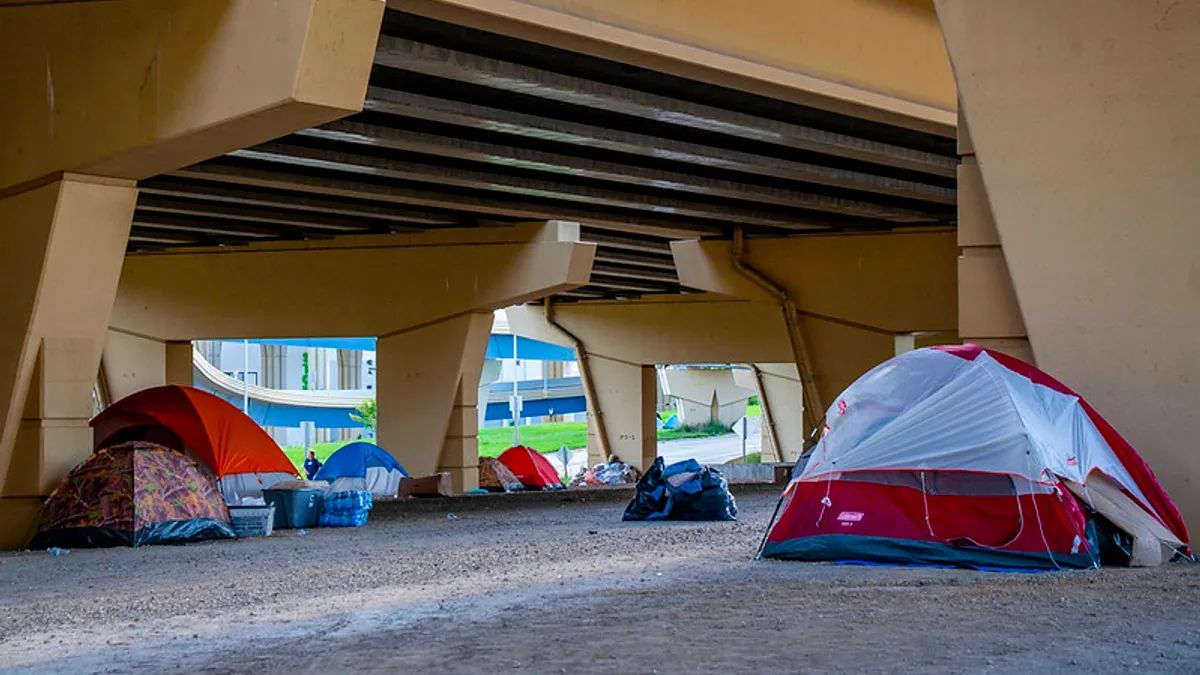Dive Brief:
- Not many schools, districts and states address challenges facing homeless students in their reopening plans, according to an analysis of 106 districts by the Center on Reinventing Public Education.
- The scan of plans, combined with surveys detailing homeless students’ needs and districts’ efforts to meet them, shows a "surprising dearth" of creative solutions and recognition for the issue. No publicly posted plan details how to find and maintain connection with students moving between homes and shelters.
- Only 11 plans specifically mention support for students experiencing housing insecurity. They include:
- SEL, academic and professional development support centering on homeless students.
- Free child care, extended day services and meals.
- Coordinated tutor services at hotels and shelters.
- Relationships with community-based homeless programs and outreach to families who can use them.
- Prioritizing homeless students for in-person instruction.
- Creating in-person "learning hubs" for homeless students to complete schoolwork.
Dive Insight:
Federal data released in January showed the number of homeless students hit 1.5 million in the 2017-18 school year, an all-time high signifying an 11% increase from the year before. The number of students sleeping in cars, parks and on the streets more than doubled in that time period.
The number of homeless English learners increased by 30% over a three-year period, and homeless students are also more likely to be Black and Hispanic. Homeless students are also 18% more likely to receive services for a disability. All are marginalized groups anticipated to have steep learning losses following spring shutdowns and summer break.
When schools closed earlier this year due to coronavirus, many educators found it difficult to initiate or maintain contact with these students during check-ins and virtual instruction. However, meal distribution sites provided an opportunity for schools to identify and connect those students and their families to resources, something districts focused on in the first few weeks of closures.
A review of policies by the Southern Education Foundation, which sampled districts across the nation, found large urban districts were more consistent in updating and posting resources for homeless students when compared to their rural and suburban counterparts.
With the economic downturn, fears are growing that more families will face housing insecurity. According to an analysis released this week from the Center for Economic and Policy Research, racial and ethnic gaps in housing insecurity widened between April and July 2020. This disproportionately impacted Hispanic and Black families with children, 44% to 45% of which were housing insecure during that time period.
The link between homelessness and lower learning outcomes is well-documented. A report released by Columbia University's Center for Public Research and Leadership, designed for schools nationwide, suggests districts:
- Work to identify homeless students (along with other marginalized students who face barriers to distance learning).
- Audit curricula to ensure it meets the needs of those students.
- Develop weekly differentiated learning plans.
- Create in-person or hybrid learning models even in a distance learning environment.
As districts prepare to support students in the 2020-21 school year, it's possible social distancing and school closures have worsened the social isolation of homeless students. These students may also face barriers to online learning including lack of technology and Wi-Fi, and could have a more difficult time focusing on learning.
The Annenberg Institute for School Reform at Brown University and Results for America suggest all districts consider providing targeted funds for homeless students, community resources, consistent mentorship and additional academic supports.













